Key Takeaways:
- The ideal slope for a cat ramp should accommodate the cat's mobility level, with a gentler slope for older cats or those with mobility issues.
- Safety features such as safety edge rails and a plush carpet surface are essential for preventing slips and falls.
- Cat ramps should be a convenient option that conserves space while providing easy access to high perches and furniture.
Creating the perfect cat ramp is essential for pet owners who want to ensure their feline friends can move around safely and comfortably. Whether your cat has trouble walking due to age or injury, or you simply want to provide a convenient option for accessing high perches, understanding what slope should a cat ramp be is crucial. This article will guide you through the considerations and practicalities of choosing the right slope for your cat's ramp.
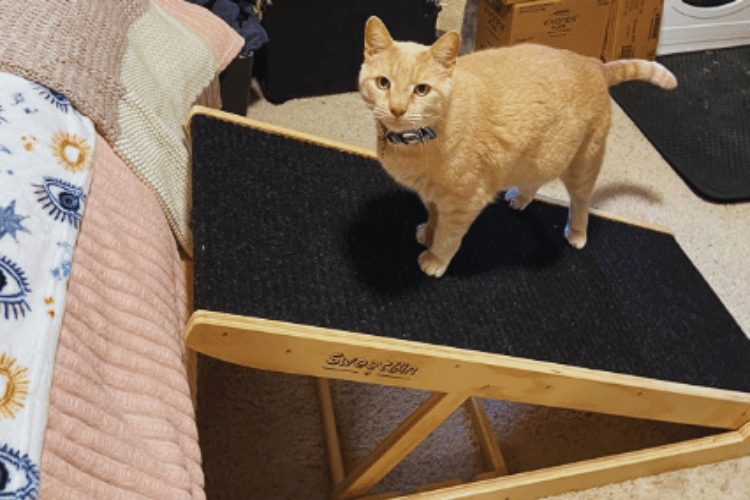
Understanding the Basics of Cat Ramps
Cat ramps are an attractive addition to any home with pets, especially for those with mobility problems. The ramp section of a cat ramp is designed to provide maximum strength and support for your cat as it climbs to higher ground. When considering what slope should a cat ramp be, it's important to take into account the age and physical condition of your cat. Older cats or those with limb weakness will benefit from a very gentle incline that reduces the strain on their legs.
The Ideal Slope for Different Cats
Most cats are agile creatures, but when they face mobility issues, jumping onto furniture or bed can become a challenge. For these feline friends, a pet ramp with an easy slope is highly recommended. The slope should allow them to climb without exerting too much effort, which is particularly important for cats with achy muscles or arthritis. A gentler slope also helps in increasing muscle strength gradually without causing additional stress.
Safety Features are Key
When designing or purchasing a cat ramp, safety precautions should never be overlooked. Safety rails on either side of the ramp section can prevent your cat from slipping off. Additionally, a surface covered with plush carpet can provide the necessary traction for your cat's paws, ensuring a secure grip as they ascend or descend the ramp.
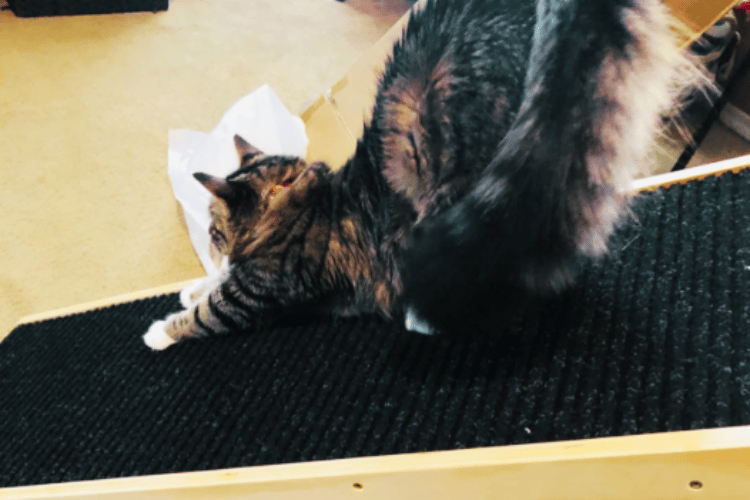
Choosing the Right Materials
The materials used for the cat ramp should be sturdy enough to support your cat's weight and provide stability. The ramp should ideally come with a fully assembled platform that can be easily transportable from one location to another. For the surface, a plush carpet is not only comfortable for your cat's paws but also helps in preventing slips.
Space-Saving Solutions
For pet owners with limited floor space, cat ramps that conserve space are a convenient option. Some ramps are designed to fold into two pieces or have a collapsible feature, making them easy to store in closet shelves or under furniture. The remaining distance that the ramp extends from the furniture should be minimal to keep your living space uncluttered.
Choosing Between Cat Ramps and Cat Stairs
When considering feline mobility solutions, it's essential to weigh the options between cat ramps and cat stairs. Cat stairs can be an excellent choice for cats that retain some agility but may struggle with higher jumps. Each individual step reduces the effort required to reach a higher surface, making it easier for an older cat or those with joint issues. The key is to ensure that the stairs are not too steep and that the top step aligns closely with the intended destination, be it a bed, couch, or window sill.
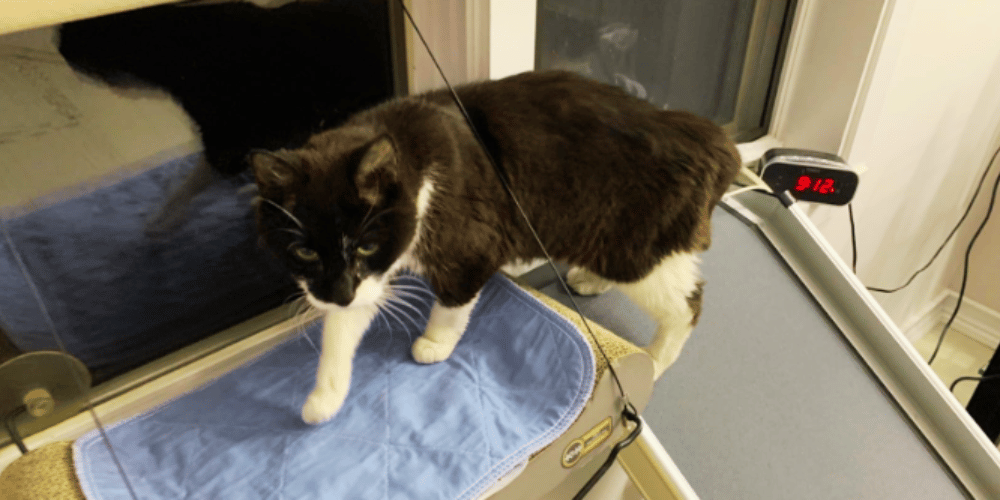
On the other hand, cat ramps provide a continuous slope that's particularly beneficial for cats that find steps challenging. This can include older cats with more severe mobility issues or even dogs that may share the ramp. The slope of a cat ramp should be gentle enough to allow your pet to ascend and descend without strain. It's crucial to consider the ramp's incline, as a slope that's too steep could deter your cat from using it and potentially cause injury.
Integrating Ramps and Stairs into Your Home
Integrating cat ramps or stairs into your home doesn't have to be a daunting task. For homes with limited space, consider a foldable design that can be easily stored when not in use. This ensures that your living space remains uncluttered while still providing your pet with the access they need. Additionally, look for designs that can be seamlessly incorporated into your home decor, maintaining aesthetic appeal while being functional.
For multi-pet households, it's important to consider the needs of all your animals. While a cat may prefer a ramp to reach ground level from a height, dogs might benefit from the same or a similar solution. Ensure that the ramp or stairs you choose can support the weight of all your pets and that the individual step height is appropriate for both cats and dogs. This way, you create a pet-friendly environment that caters to the mobility needs of all your furry family members.
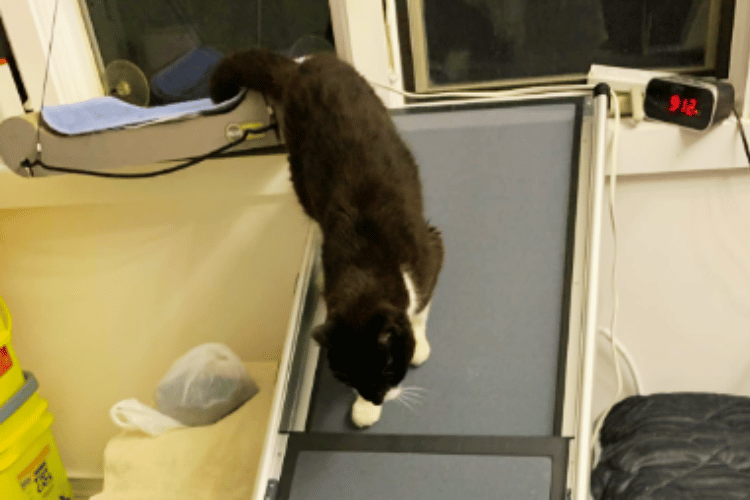
Integrating Ramps with Home Decor
Cat ramps can be more than just functional; they can also be an attractive addition to your home decor. Look for ramps that match your home's aesthetic, whether it's a modern design with clean lines or a more traditional look with wood finishes. Ramps with an attractive design can seamlessly blend into your space, making them a dual-purpose piece of furniture.
Adjustability for Maximum Comfort
An adjustable ramp can be a highly versatile tool for your pet. It allows you to change the incline based on your cat's needs, which can vary over time. For instance, a steeper incline might be suitable for a young and healthy cat, but as they age or if they develop mobility problems, you can adjust the ramp to a gentler slope.
The Importance of a Level Landing
At the top of the ramp, there should be a level landing before the bed, couch, or other furniture piece. This level landing gives your cat a moment to balance and prepare for the final step onto the furniture. It's a small but critical feature that can make a big difference in your cat's confidence and safety when using the ramp.
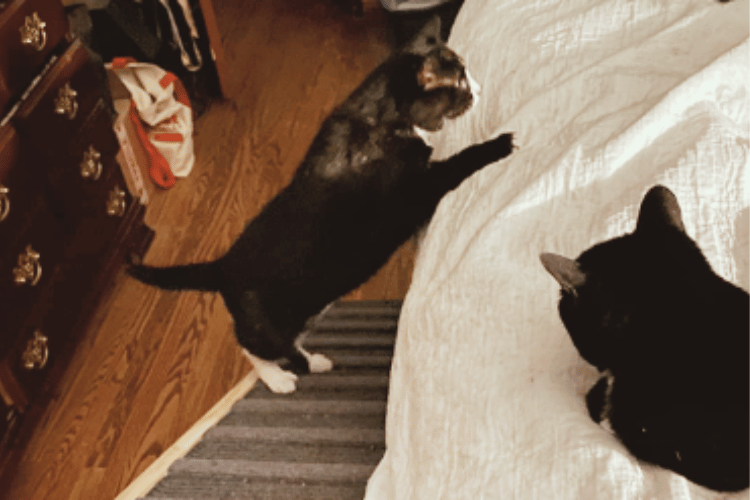
Training Your Cat to Use the Ramp
Introducing your cat to a new ramp may require some patience and encouragement. Place treats along the ramp section to entice your cat to explore it. With time, your cat will associate the ramp with positive experiences and will be more inclined to use it regularly.
Maintenance and Upkeep
To ensure the longevity of your cat ramp, regular maintenance is necessary. Check the screws and joints periodically to ensure they are tight and the ramp remains stable. The surface should also be cleaned regularly to remove any dirt or fur that could reduce traction.
Summary
When considering what slope should a cat ramp be, it's important to factor in your cat's individual needs, the safety features of the ramp, and how it will fit into your living space. A ramp with a very gentle incline is best for older cats or those with mobility issues, while safety edge rails and a plush carpet surface can help prevent accidents. Additionally, choosing a ramp that is easily assembled and easily transportable will make it a convenient and attractive addition to your home.
FAQ Section
Q: What is the best slope for a cat ramp? A: The best slope for a cat ramp depends on your cat's mobility. Generally, a gentler slope is recommended for cats with mobility issues or older cats, while a slightly steeper incline may be suitable for younger, more agile cats.
Q: Are safety rails necessary on a cat ramp? A: Yes, safety rails are an important feature that helps prevent your cat from slipping off the sides of the ramp. They provide an extra level of security and confidence for your cat.
Q: How can I encourage my cat to use the ramp? A: You can encourage your cat to use the ramp by placing treats along the ramp and rewarding them for using it. Over time, your cat will become more comfortable and familiar with the ramp.
Thank you for visiting LegitLists we hope this helps you make a legitimate choice!






